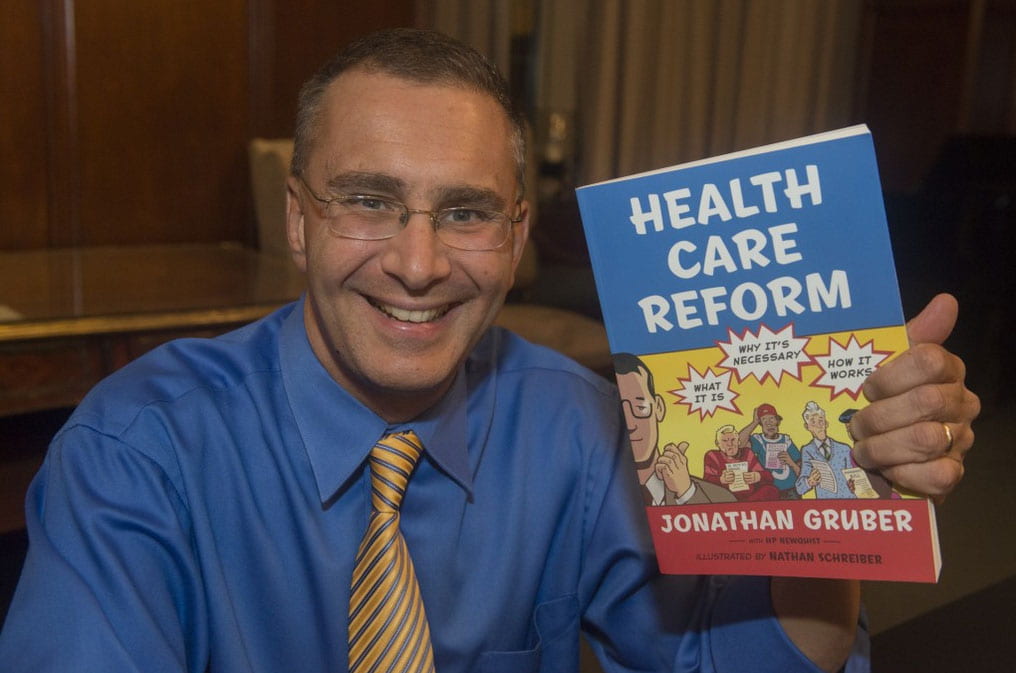
Jonathan Gruber
On October 4, 2013 at 6 p.m. in Brown Hall, Jonathan Gruber, Massachusetts Institute of Technology economist and renowned health care expert, talked about “Health-care Reform: What It Is, Why It’s Necessary, How It Works.”
Just a few days after the Affordable Care Act’s mandatory insurance component became law, the principal architect of the Massachusetts healthcare system and chief adviser to President Obama’s plan was on Danforth campus to explain the costs and benefits of health-care reform. The title of his talk was the same as his comic book that explains in 140 delightful pages the 1,000-page legal document.
Gruber’s research focuses on the areas of public finance and health economics. From 2003-06, he was a key architect of Massachusetts’ health reform effort, and after it was enacted, he joined its main implementing body. During the 2008 presidential election, he served as consultant to the Hillary Clinton, John Edwards and Obama campaigns.
During Obama’s first term, Gruber served in his administration as a technical consultant and worked with the president and Congress to help craft the Patient Protection and Affordable Care Act, also known as “Obamacare.”
A professor of economics at MIT since 1992, Gruber also serves as director of the Health Care Program at the National Bureau of Economic Research. He has garnered a number of prestigious awards and honors, including membership in the Institute of Medicine, the American Academy of Arts and Sciences and the National Academy of Social Insurance.
Gruber was named “One of the Top 25 Most Innovative and Practical Thinkers of Our Time” in 2011 by Slate magazine.
He is the author of a leading textbook, Public Finance and Public Policy; a graphic novel, Health Care Reform: What It Is, Why It’s Necessary, How It Works, which transforms the more than 1,000-page health-care bill into 140 clever and understandable pages; as well as more than 140 scholarly articles. He is the editor of six research volumes.
Gruber received his bachelor’s degree in economics from MIT and his doctorate from Harvard University.